Introduction
In today's dynamic marketplace, small businesses face the challenge of attracting and retaining a loyal customer base. To excel in this endeavor, a deep understanding of consumer demographics and tailored marketing strategies are essential. Moreover, implementing loyalty programs and exceptional customer service can further strengthen the bond between businesses and their patrons.
Leveraging data insights and exploring grants and funding opportunities are also crucial for sustainable growth. In this article, we will explore the strategies and practices that small businesses can adopt to attract and retain customers, enhance their online presence, hire and retain top talent, achieve scalability and growth, manage finances effectively, demonstrate strong leadership and strategic decision-making, build a positive company culture, diversify their client base, balance quality and growth, and overcome inflation and economic uncertainty. By applying these practical insights and solutions, small businesses can position themselves for long-term viability and success.
Attracting and Retaining Customers
To succeed in a dynamic marketplace, small enterprises must excel in attracting and retaining a devoted client base. Essential to this is a deep understanding of your consumer demographics, which involves thorough market research to identify the demand, market size, and economic indicators that influence your audience's purchasing power. This knowledge not only mitigates risk but sets the foundation for tailored marketing strategies. By acknowledging the distinct requirements and preferences of your target segments, you can create tailored promotions, which have been proven to greatly improve acquisition and loyalty.
Moreover, the implementation of loyalty programs and exceptional service can further solidify the relationship between your business and its patrons. Case studies from different organizations have shown the success of customer-centric strategies. For example, arts organizations have experienced an increase in their audience by posing important inquiries about their service delivery and by striving to prioritize the requirements of those they serve, whether through engaging interactions or tailored messages.
In the current financial landscape, leveraging data insights can provide a competitive advantage. Current clients, when effectively engaged, can provide invaluable feedback that drives continuous improvement. Data emphasizes the significance of the experience in serving clients across all points of contact, with 33.2 million enterprises in the United States emphasizing its contribution to their achievements.
Grants and funding opportunities also have a substantial impact on the sustainability and expansion of enterprises. From grants specific to the beauty industry, which can go up to $100,000, to federal contracting opportunities for women-owned enterprises, these financial resources can assist in starting or growing operations, thereby enhancing the potential for attracting and retaining clientele.
To conclude, achieving success in the realm of smaller enterprises is multifaceted, hinging on a strategic approach that encompasses thorough market research, customer-centric strategies, and the pursuit of growth opportunities through grants and funding. By giving importance to the experience of the clients and utilizing accessible resources, enterprises of limited scale can accomplish long-term sustainability and prosperity.
Digital Flexibility and Online Presence
Establishing a strong online presence is crucial for enterprises in today's digital environment. It goes beyond just having a website; it's about providing a seamless online experience for your customers. For instance, when Túlio and Eric launched their online store, they faced significant challenges with their web host's performance during peak traffic, leading to crashes and a loading time of over six seconds. This is a cautionary tale for small enterprises about the significance of selecting the appropriate hosting services to evade comparable pitfalls.
Moreover, embracing e-commerce is not an option but a necessity. FTI Consulting's recent data highlights a 10% increase in online retail sales, signaling the unstoppable march of digital commerce. Small enterprises must capitalize on this trend by embracing e-commerce platforms and mobile apps to broaden their market reach and cater to consumer preferences that are increasingly shifting online.
On top of that, the efficiency of operations can be vastly improved through digital transformation, as demonstrated by Capital BBQ's integration of a warehouse management system. This move, spearheaded by their tech-savvy leader, Rathwell, underscores the importance of modern and adaptable ERP systems to streamline processes.
Additionally, the reliance on social media alone is a risky strategy. The story of Bacal & Associates' 25th anniversary reveals the dangers of being at the mercy of platform policies and changes. Establishing an independent website mitigates these risks and ensures a direct line of communication with customers, reinforcing a brand's image and values.
To finance these technological advancements, smaller enterprises can consider grants, essentially free funds that do not need to be paid back, providing an appealing option to conventional funding. Hiring a skilled grant writer can be a strategic move to navigate the complexities of securing such funding, ensuring the financial support needed to thrive in the digital domain.
Hiring and Retaining Talent
For small entrepreneurs, putting together a team that is both skilled and dedicated is a cornerstone of success. In the competitive environment of talent acquisition, it is crucial to establish a positive work atmosphere that encourages development and offers competitive compensation. By taking this approach, companies can attract exceptional individuals and, more importantly, keep them. Networking, employee referrals, and collaborations with academic institutions are strategic avenues for talent acquisition. Consider the case of a prominent Chilean retailer, which experienced rapid growth, expanding from 200 to 1,200 employees in a short time span. They faced challenges in maintaining their goal to become the preferred workplace for technologists, leading them to establish a dedicated Talent area within the company. This emphasizes the significance of a strategic approach to talent management, which is just as vital for small enterprises as it is for larger corporations. Moreover, understanding individual motivators and demotivators within your team is essential. For some, job security and work-life balance are key, while others seek continuous learning and career advancement opportunities. A one-size-fits-all approach is less effective than a tailored strategy that resonates with each team member's aspirations. Tiny enterprises have a colossal impact on the international economy, with more than 400 million globally and 33.2 million solely in the United States, as per recent statistics. Nonetheless, with only 25% lasting beyond 15 years, the adoption of strong human resources strategies is not only advantageous but crucial for continuous progress and achievement. Ultimately, the careful management of expanding small enterprises involves striking a balance between fostering current clientele and making strategic employment decisions that align with the company's vision for development. This delicate equilibrium is crucial for minimizing risks, maximizing profits, and safeguarding the future of the company.
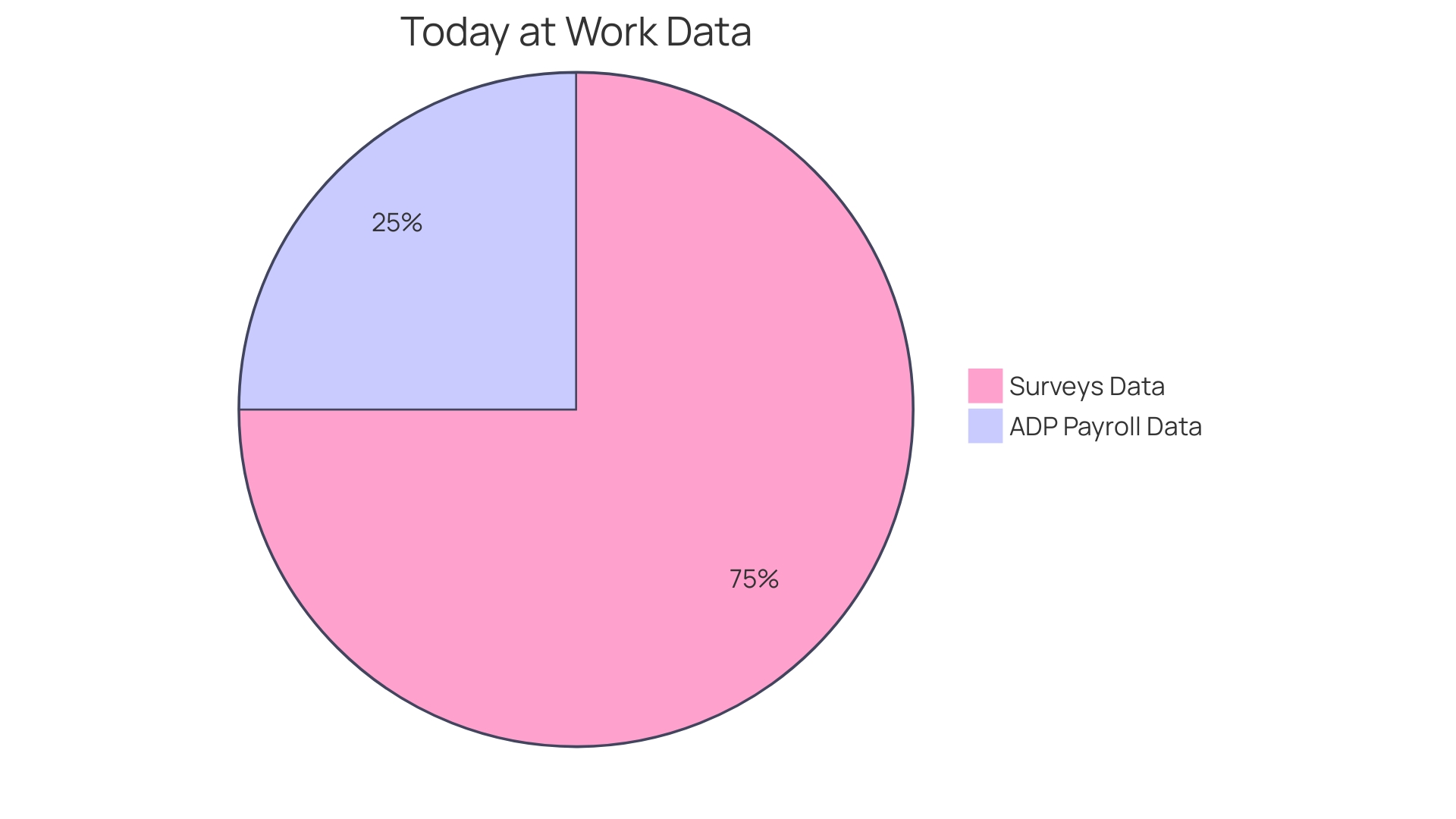
Scalability and Growth
Small enterprises are the foundation of the economy, but expanding operations for sustainable development can be a intricate challenge. To thrive, it's essential to integrate technology strategically, much like Chess.com did when expanding its digital chess platform to connect players globally. With a focus on creating a stable IT infrastructure, Chess.com demonstrates how investing in both public cloud and on-premises solutions can address scalability needs and foster community growth.
For instance, embracing digital evolution is critical. User-friendly e-commerce platforms, efficient inventory systems, and cloud-based drives are just a few examples of how technology can bolster productivity and scalability. HealthSherpa, an integrated health insurance marketplace, showcases the power of preparedness and technological leverage by managing massive enrollment spikes without interruption, ensuring seamless service during peak periods.
As enterprises look towards the final quarter of 2023, it's crucial to draw lessons from previous encounters and construct for the future. A proactive approach to organizational processes and continuous innovation can set the stage for long-term success. Wholegrain Digital's dual-pillar sustainability model exemplifies the significance of aligning day-to-day operations and project selection with core values, influencing positive change and ensuring every aspect of the organization contributes to broader goals.
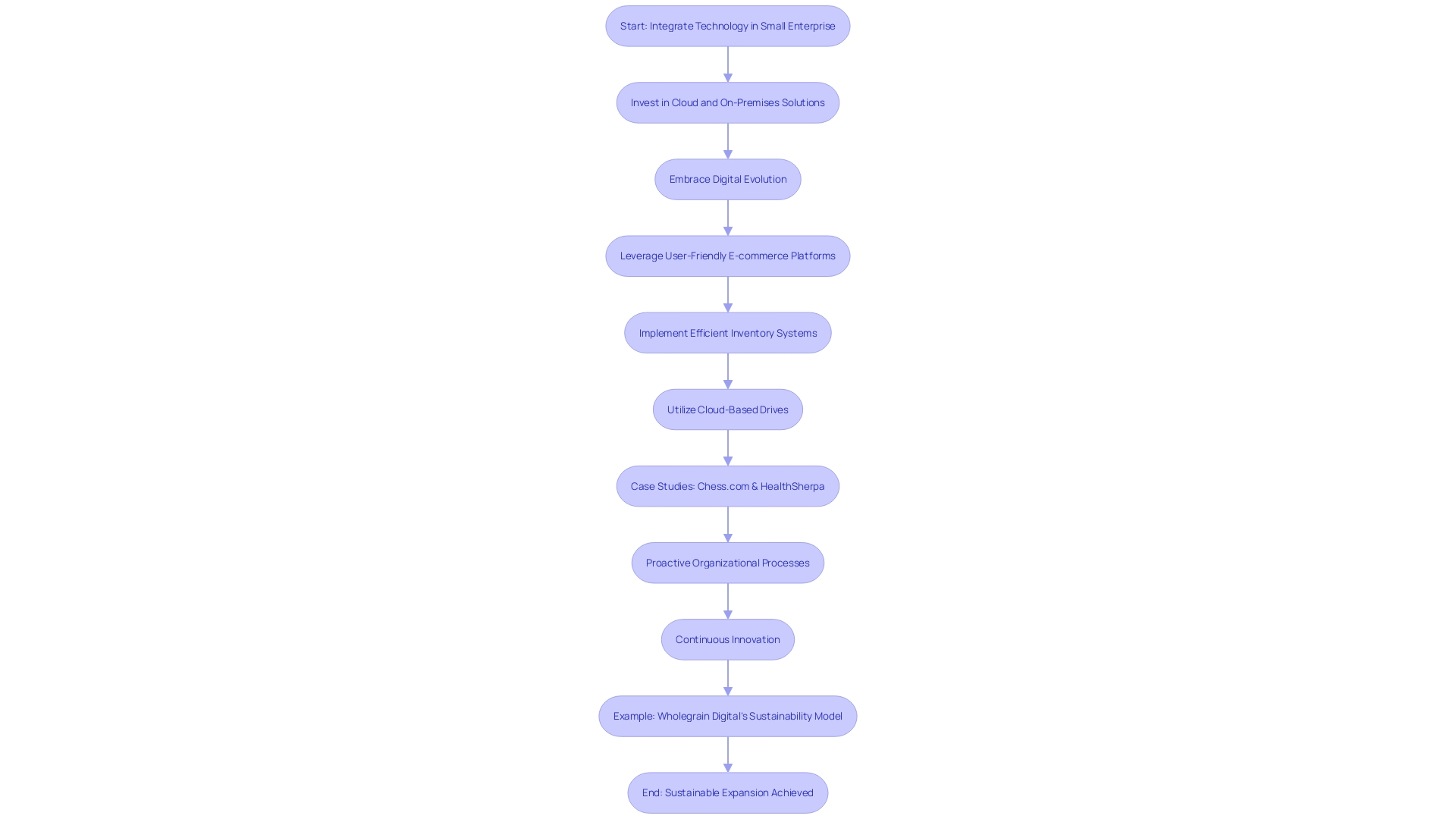
Financial Planning and Money Management
For small entrepreneurs, mastering financial planning is a pivotal factor in whether their venture thrives or stumbles. This expertise starts with creating a comprehensive financial budget, which functions not only as a ledger of numbers, but as a mirror reflecting the company's aspirations, priorities, and both anticipated revenues and expenditures. A fundamental aspect of this is a thorough comprehension of cash flow, the very essence of a company's vitality. It's essential to maintain a meticulous record of all financial transactions to guarantee the organization can sustain itself and expand.
Having a strong budget also means being adaptive. Financial models, such as the Three Statement Model, which covers income statements, cash flows, and balance sheets, are essential tools that can be continuously improved as conditions evolve. This ongoing process allows for the assessment of various scenarios and outcomes, assisting in strategic planning for both the best and worst-case situations.
Expense management and the distinction between fixed and variable costs are also crucial, particularly as a company expands. Developing a company expense policy is a proactive step to oversee spending and mitigate risks of over-expenditure or fraud.
In the pursuit of financial stability and expansion, small enterprises should not underestimate the potential of grants as a funding source. Unlike traditional loans, grants provide a financial boost without the obligation of repayment, and skilled grant writers can be invaluable in securing this form of financing.
Furthermore, entrepreneurs must cultivate sales skills, which are indispensable not only for customer acquisition but also for securing financing and strategic partnerships. The skill to express the reasoning and advantages of a proposition is a crucial part of guiding any enterprise towards success.
Embracing a learning mindset is equally important for owners of smaller enterprises. The most successful entrepreneurs are those who recognize the value of continuous learning and are open to taking counsel from both peers and experts, thus positioning themselves to navigate the complexities of managing and expanding their enterprises effectively.
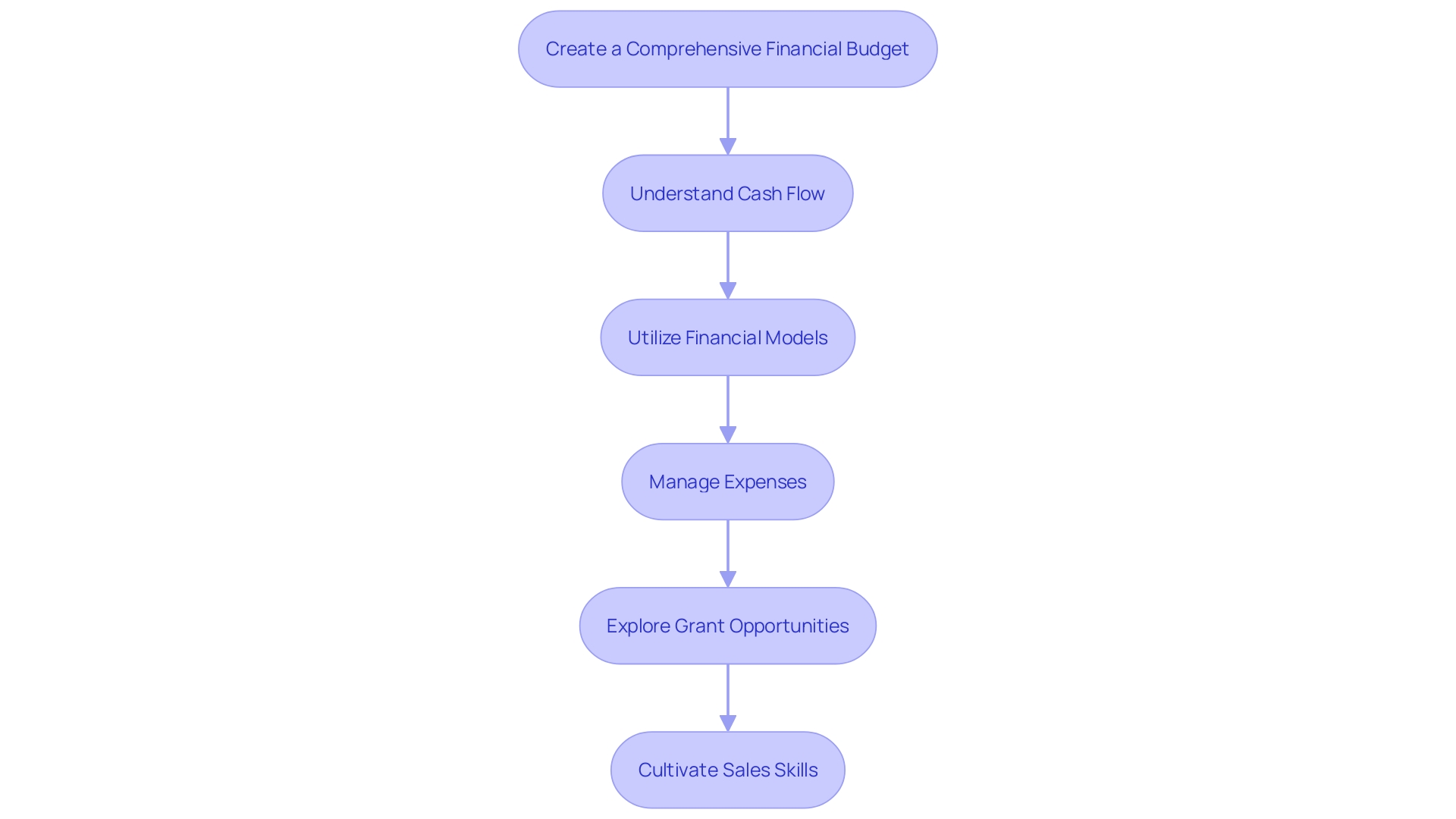
Leadership and Strategic Decision-Making
Strong leadership, combined with strategic decision-making, is the foundation of small enterprise achievement. Leaders must not only have a clear and compelling vision but also set achievable goals while nurturing a culture that prizes innovation and collaboration. Adaptability and receptiveness to feedback are essential traits, as well as the courage to pursue calculated risks. Importantly, leaders should conduct frequent evaluations of their strategies, integrating data-driven insights to maintain a competitive edge and organizational agility.
Case studies from revered institutions like Harvard Business Review Press highlight pivotal moments where leaders' perspectives shifted dramatically, illustrating the transformative power of visionary thinking. For instance, the founder of Panera Bread experienced a profound paradigm shift while contemplating the future of his company, leading to substantial organizational change and growth.
Meanwhile, Costco's leadership exemplifies the importance of disciplined experimentation guided by three critical questions to assess new products or services. This approach helped them avoid distractions, such as analyst pressure to adopt unprofitable practices during the pandemic, illustrating strategic focus and long-term thinking.
The principles of Intent-Based Leadership, as showcased by the experience with the submarine commander and author David Marquet, further emphasize the value of empowering team members and fostering a culture where informed decision-making is distributed throughout the organization.
News concerning women entrepreneurs securing federal contracts, and insights on leveraging AI for organizational optimization, highlight the ongoing evolution of the corporate landscape and the necessity for leaders to stay current and informed.
Statistically, enterprises of limited size constitute a crucial component of the worldwide economy, with over 400 million globally and 33.2 million in the United States alone as of the beginning of 2024. Nevertheless, given that only a quarter of enterprises endure beyond 15 years, the significance of strong leadership and strategic flexibility becomes even more evident.
Quotes from influential women and sports figures serve to inspire and motivate, echoing the sentiment that overcoming challenges and striving for success is a universal journey shared by leaders across all domains.
Integrating these insights into leadership practices can greatly improve an organization's capability to navigate challenges and seize opportunities for success and optimization.
Building and Maintaining Company Culture
Establishing a robust organizational culture is more than just a feel-good element; it's a strategic necessity for enterprises aiming to allure and retain exceptional personnel. To establish a thriving work environment, enterprises of limited size can draw inspiration from InVideo AI, where the comprehension of the product is shared among various roles, cultivating a feeling of possession and transparency among all members of the team. Additionally, embracing unconventional models like Latro Kimya's flat hierarchy can empower employees, giving them the autonomy to innovate and contribute meaningfully.
Small enterprises must also give importance to diversity and inclusion, going beyond mere policy to intentional recruitment of a heterogeneous workforce. This can lead to a richer tapestry of ideas and drive innovation, as diverse teams are shown to be 70% more likely to capture new markets according to Harvard Business Review.
Regular team-building and employee engagement initiatives are essential, but so is the recognition of efforts. As highlighted by leaders in various industries, respect and trust are the cornerstones of a supportive environment that amplifies employee energy.
Moreover, in accordance with Rivian's dedication to sustainability, enterprises of a smaller scale can harmonize their culture with wider environmental objectives, thus creating a favorable effect on the planet while boosting their brand reputation. In fact, companies that truly commit to diversity, equity, and inclusion (DE&I) are known to increase innovation and profitability, becoming employers of choice, as emphasized by Hudson RPO's DEI Lead.
In conclusion, enterprises that invest in a favorable and all-encompassing culture, emphasized by fundamental principles, transparent communication, and a dedication to career advancement, are primed for triumph. By adopting these practices, they can not only foster a productive environment but also stand out in a competitive market.
Managing Client Dependence and Diversification
Small enterprises, the foundation of the economy, frequently encounter the obstacle of excessive dependence on a restricted customer base. With a staggering 33.2 million small enterprises in the United States alone, the competition is fierce, and the loss of a key client can be detrimental. To minimize this risk, it's essential for these enterprises to broaden their client portfolio. This approach not only safeguards against market unpredictability but also enhances the company's resilience.
Embracing strategies such as intentional recruitment can broaden a company's appeal to a wider demographic. Hiring from diverse backgrounds brings fresh perspectives and ideas that are instrumental in attracting new clients. Connecting and establishing strategic alliances with other enterprises can unlock opportunities to explore fresh markets and target audiences. For instance, Nets, a digital payment solutions company, expanded their client base by tailoring their services to meet the unique needs of clients across various European regions.
Moreover, small enterprises must stay flexible, consistently adjusting to industry trends and competitor movements. Staying updated on market changes allows organizations to anticipate the requirements of their clients and create inventive resolutions. This proactive approach to commerce can lead to a competitive advantage that attracts fresh customers while retaining current ones.
Outstanding service and delivering consistent value are the linchpins of client retention. According to Karmela PeÄek from eWyse Agency, converting intricate information into captivating content can greatly improve user experience, inspiring customers to interact with the company. Additionally, enterprises of smaller scale should make use of grants, which are referred to as 'free funds' that do not require repayment, to support their expansion and diversification endeavors.
In the end, companies that grasp the significance of expanding their customer base, staying updated, and delivering outstanding service are the ones that will not only endure but flourish in the competitive realm of enterprises.
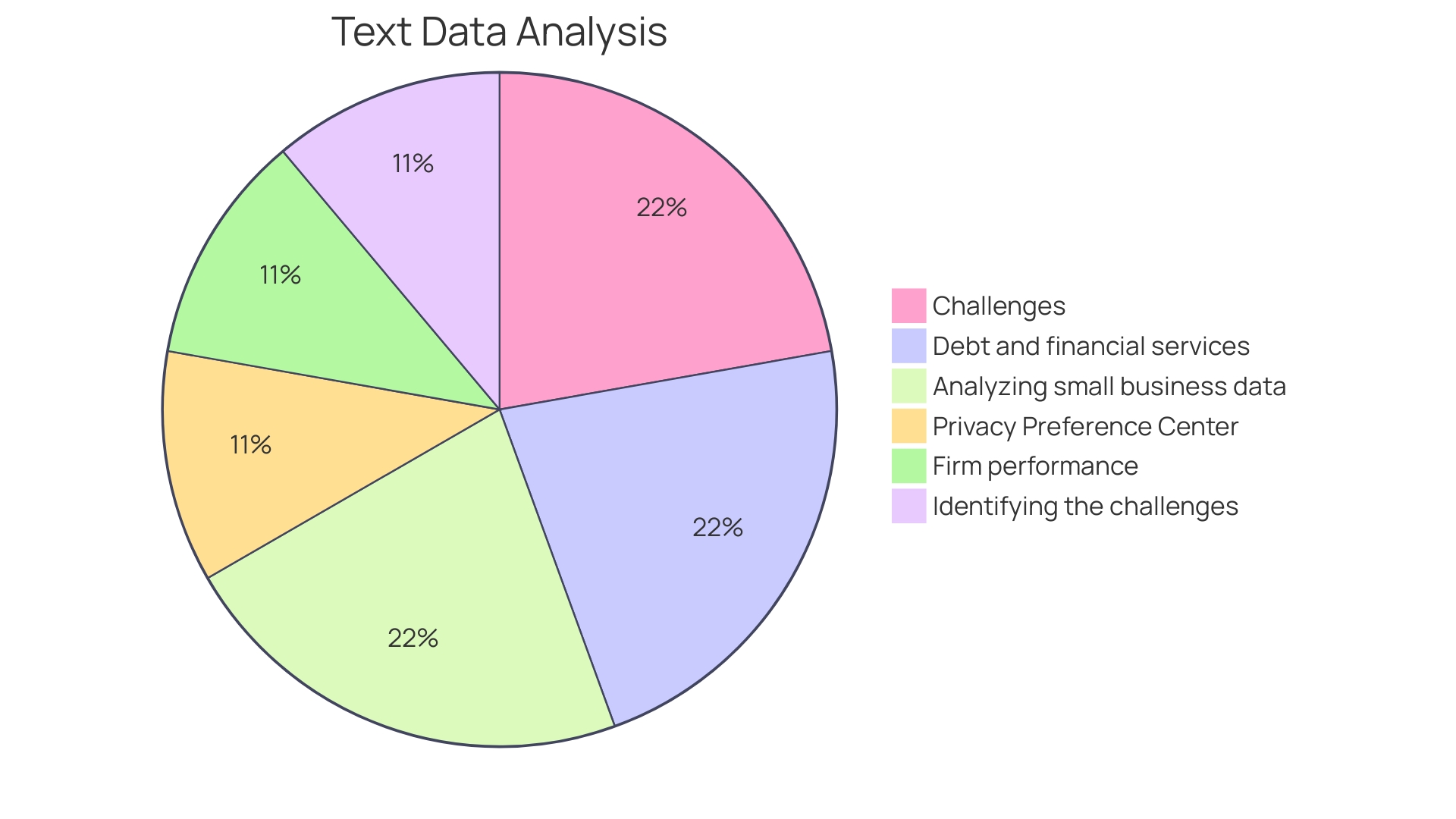
Balancing Quality and Growth
To remain competitive and guarantee high-quality development, enterprises of limited size must manage the delicate equilibrium between product excellence and expansion. By adopting a disciplined approach, small enterprises can implement a methodical evaluation of new offerings based on profitability, market demand, and alignment with core values, inspired by industry leaders like Costco. Costco's resistance to adding non-profitable services like curbside delivery during the pandemic, despite competitive pressures, exemplifies a commitment to strategic growth decisions based on long-term viability rather than short-term gains.
Apart from internal quality control, feedback from clients is crucial for ongoing enhancement, allowing companies to enhance their products and services. This customer-centric philosophy has been instrumental in Costco's expansion of offerings, which now include a wide range of services that were not part of its original lineup, such as optical services and food courts, without compromising its core strengths.
Moreover, strategic partnerships can be a powerful tool for small businesses to expand their market presence. These collaborations can provide access to new resources and clientele, much like how accounting firms may offer bundled technology and services at a fixed price, drawing on the 'prix fixe' concept to ensure value and efficiency for their clients.
Embracing digital evolution is also crucial, as seen in the increasing importance of ecommerce platforms, inventory management systems, and data-driven decision making. These technologies can streamline operations and enhance customer experiences, fostering scalability and personalized marketing strategies.
Nevertheless, the pursuit of expansion must be assessed against the sustainable growth rate, which considers the company's ability to develop without undue financial strain. This involves a careful assessment of non-financial resources, such as talent, operational capabilities, and culture, to avoid overextension.
With more than 400 million enterprises globally and 33.2 million in the United States alone, the potential for expansion is immense, but so is the rivalry. Businesses that learn quickly, adapt to market demands, and leverage technology while maintaining a focus on quality and customer satisfaction are more likely to thrive and endure beyond the 25% that survive past 15 years.

Overcoming Inflation and Economic Uncertainty
In the world of small enterprises, remaining financially stable in the face of inflation and economic unpredictability is an ongoing struggle. It demands a vigilant eye on market trends and a strategic approach to cost management. By evaluating supply and demand, companies can set prices for their products to mirror present market conditions and safeguard their profit margins. For example, jewelers are keenly aware of the increasing gold prices yet still experience steadfast demand, enabling them to modify their pricing structures without impeding their operations.
Cost-saving measures are equally crucial. Huldit's innovative outdoor gear, including the versatile U-lock holder, exemplifies how a compact enterprise can prosper by emphasizing on quality, distinctive design, and customer-centric products. The company's inception was born from a personal need that was skillfully transformed into a marketable product, demonstrating the substantial impact of solution-oriented thinking and passion-driven entrepreneurship.
To minimize financial risks, as the founder of Huldit did when investing his entire savings into the enterprise, enterprises of limited size must engage in proactive financial planning. Diversification of products or services is a key strategy to adapt to economic changes. Huldit's consistent growth over seven years is a testament to the effectiveness of such an approach, coupled with the courage to face the inherent risks.
Furthermore, establishing strong connections with suppliers can provide protection to enterprises during periods of economic instability. Having catered to more than 14,000 enterprises, the Goldman Sachs 10,000 Program emphasizes the significance of obtaining comprehensive education and support services for entrepreneurship. This initiative emphasizes the significant role that smaller enterprises play in driving economic activity, as they make up a majority of US business establishments.
Finally, understanding the intricacies of the market and staying informed is crucial. Editorials by experienced journalists like Jaelyn, who clarify the challenges of being a digital entrepreneur, offer a voice for entrepreneurs to navigate the intricate corporate environment. With insights from seasoned professionals and a commitment to continuous market monitoring, small businesses can forge a path through the challenges of inflation and economic uncertainty.
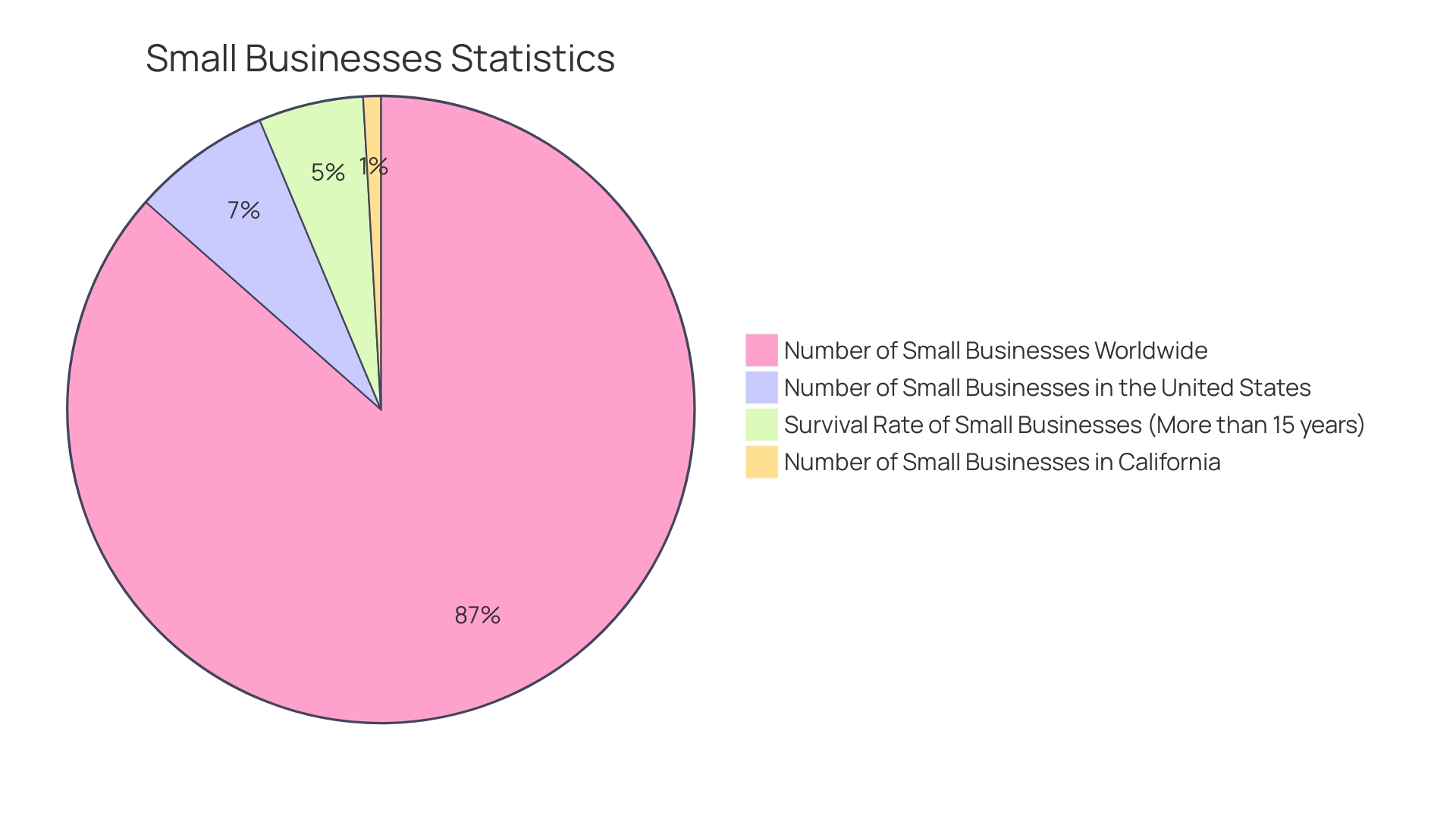
Conclusion
In today's dynamic marketplace, small businesses face the challenge of attracting and retaining a loyal customer base. To excel in this endeavor, understanding consumer demographics and implementing tailored marketing strategies are essential. Loyalty programs and exceptional customer service further strengthen the bond between businesses and patrons.
Leveraging data insights and exploring grants and funding opportunities are crucial for sustainable growth.
A solid online presence is indispensable for small businesses. Embracing e-commerce, digital transformation, and an independent website expand market reach and improve operational efficiency. Grants provide funding for technological advancements.
Assembling a skilled and dedicated team is essential. Cultivating a positive work environment, offering competitive compensation, and understanding individual motivators attract and retain top talent. Strategic hiring aligns with growth vision for effective expansion management.
Scaling operations for sustainable growth requires strategic technology integration. Embracing digital evolution, proactive business processes, and mastering financial planning are vital. Grants and sales skills secure financing and partnerships.
Strong leadership and strategic decision-making are vital for small business success. Clear vision, achievable goals, and a culture valuing innovation and collaboration are key. Building a strong company culture, diversifying the client base, and providing exceptional customer service are crucial.
Balancing quality and growth involves evaluating offerings, incorporating customer feedback, forming strategic partnerships, and embracing digital evolution. Overcoming inflation and economic uncertainty demands pricing adjustments and cost management. Proactive financial planning, diversification, and strong supplier relationships mitigate risks.
By implementing these strategies, small businesses position themselves for long-term viability and success. Understanding consumer demographics, embracing technology, attracting and retaining top talent, scaling operations strategically, managing finances effectively, demonstrating strong leadership, building a positive company culture, diversifying the client base, and balancing quality and growth are key to success.
Build your online presence today and expand your market reach!




